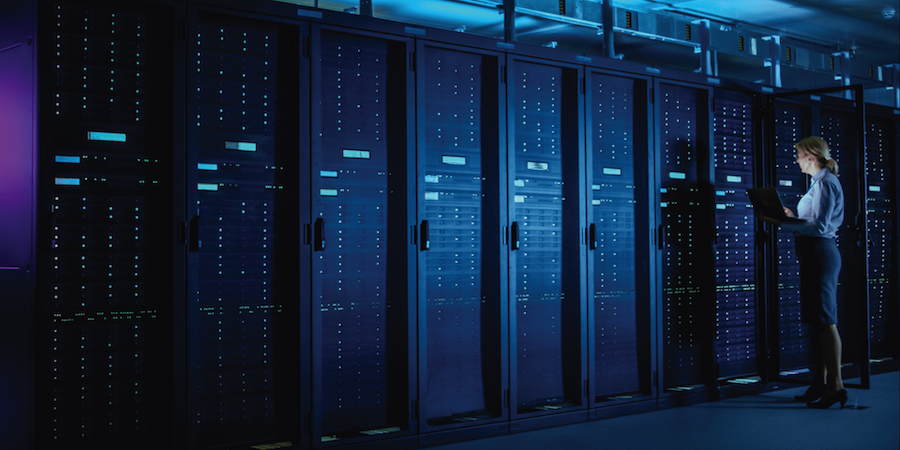As a gamer, you’re probably going to invest in a PC able to play the latest generation of games or upgrade your existing computer for the same purpose, including the processor, graphics card and monitor. However, if you don’t add storage capacity, as with solid state drives (SSDs), your gaming experience could suffer — in fact, it may become impossible. That’s because game developers are now requiring SSDs to play the top new games, including “Starfield,” “Assassin’s Creed Mirage” and “Baldur’s Gate 3.” So, if you’re wondering are internal SSDs good for gaming, the answer is a resounding: Yes!
SSDs were already crucial for esports. Riot Games, for example, tapped into SSDs for its League Championship Series to effectively avoid the hardware-related interruptions that come with traditional spinning disk media. For them, the boost from the technology is irrefutable.
Given the wholesale shift to SSDs in gaming, it’s essential that gamers — and the computers they love — follow suit, especially if they are still using a system with a hard disk drive (HDD). Making the change starts with understanding the key differences between SSDs and HDDs, SSD pros and cons, and how switching from HDD to SSD improves the gaming experience. Here’s what you need to know.
HDDs: Life in the slow(er) lane
The main difference between SSDs and HDDs is their inherent architecture. HDDs are mechanical devices that use an actuator arm to read and write data on a spinning magnetic drive. The actuator/disk combo resembles a record player, where the arm moves across the disk to write, find and read the data before transferring it to the central processing unit.
Get your complete guide to SSD management
Discover how to effectively adopt and manage SSDs in your organization with this ultimate guide. Download Now
SSDs, on the other hand, have no moving parts. Instead, the data is written on flash memory. Therefore, the device can write and read data significantly faster than HDD devices can, creating less lag and jitter during gaming. That means you don’t have to wait long for a game to load whenever you start up the game or move into a new in-game environment. Perhaps more importantly, graphics will render at the right speed, which is extremely important given that many of today’s games start at 30 frames per second (FPS), and even now reach 60 and even 120 FPS.
With HDDs, there’s also the danger of file fragmentation, which can happen as files are written to different non-sequential areas on the spinning disk. This can also bog down gameplay and slow speeds. For example, when you move the controller to walk or run forward, the controller and the movement in the game may fall out of sync, leading to a frustrating gaming experience.
SSDs: Life in the fast lane
Are internal SSDs good for gaming? They certainly make it faster. Although the speed of SSDs compared to HDDs depends on connectivity, size and processing power, they are nevertheless much faster, up to 20-40 times more than HDDs. Even the slower SATA SSDs, such as Samsung 870 EVO, can record over 500 MB/s, which is more than twice as fast as HDDs’ typical read/write speeds of 80-160 MB/s. The latest generations of SSDs, especially those built using the NVMe® protocol, such as Samsung 990 PRO, reach much higher to 7,450/6,900 MB/s. That’s close to the maximum performance of PCIe®4.0. and in a compact M.2 2280 form factor.
Capacity is another major factor impacting gameplay. “Medal of Honor: Above and Beyond,” for example, comes with an installation size of 180GB; “Star Wars Jedi: Survivor” takes 155GB and “Baldur’s Gate 3” reaches 150GB. All of these games require repeat — often automatic — saving, which takes up storage space, too. That’s particularly troublesome for HDDs, which will struggle to access all the necessary files for gameplay as it fills. Low capacity also limits the number of games you can have on your system at any one time, too.
SSDs may still come with a higher price tag than HDDs, but the gap is growing ever smaller as the technology improves and spreads. In the long term, however, SSD users end up saving money because they use less energy and fail significantly less often than HDDs, thanks to the absence of moving parts. Because SSDs have also proven to better handle drops and jostles, they also don’t need to be replaced as often as HDDs — if at all.
So while you may be tempted to spend money on items like tricked-out gaming chairs, surround sound speakers, and top-of-the-line monitors, you’ll want to do so after upgrading to an SSD. Otherwise, all these gaming accouterments may simply not matter if the system can’t load and render the game properly. For gamers, SSDs are a clear win — and an investment that’s well worth the time and money.
Learn more about how SSDs improve gaming, as well as how Samsung SSDs are helping create the best-in-class gaming experience.







